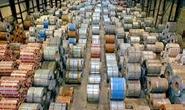Market Data

November 5, 2013
ISM Steel Buyer Short Term Outlook Muted but Optimism for Longer Term
Written by Sandy Williams
ISM steel buyers reported shipping levels are higher than three months ago and about the same or higher compared to 12 months ago.
Inventory decreased slightly in October with most (46.2 percent) saying they have tons on hand to cover 0-1 months; 38.5 percent said they have enough for 1-2 months. Tons on hand are at the same or slightly higher level than 12 months ago. Inventory levels are about right for demand according to 76.9 percent of buyers and too high according to 23.1 percent. Most plan to maintain current inventory levels over the next six months.
Incoming orders levels needed for most efficient operations were about right for 53.8 percent of those surveyed but 38.5 percent, up from 26.7 percent last month, considered them too low. Incoming orders are expected to slide somewhat in the next three months. About half of respondents said they are operating below their most efficient levels. Selling prices were viewed as competitive.
Respondents were tied at 46.2 percent on whether backlogs would remain the same or decrease. At current production levels and with no new orders, the current order book would last 1-2 months for 46.2 percent, 2-4 months for 15.4 percent, 4-6 months for 23.1 percent and 6+ months for 15.4 percent.
The number of workers on short time or lay off decreased in October with 94.9 percent of respondents saying they have no labor issues. About 77 percent of those surveyed anticipate building or buying new manufacturing facilities within the next year. Slightly more than half (53.8 percent) expect to hire new people.
No change in offshore dependence is anticipated. Prices from foreign mills are about the same or somewhat lower than domestic prices according to most. An increase in activity from foreign mills was noted.
Optimism won out again in October with an increase in those who expect economic activity to improve in the next six months along with a rise in sales and production for the industry.






